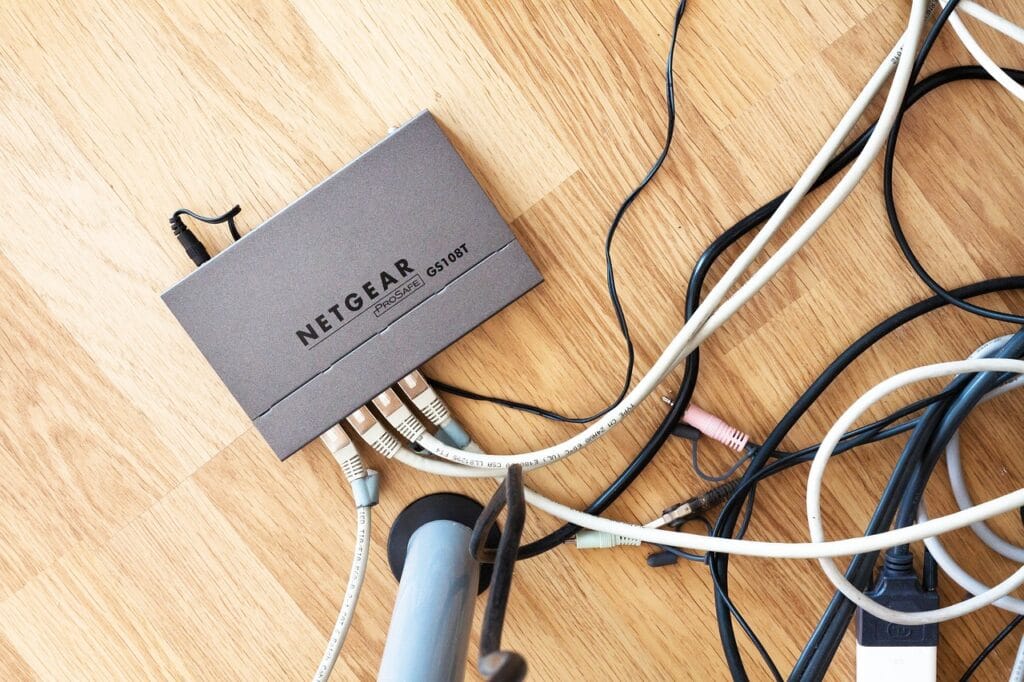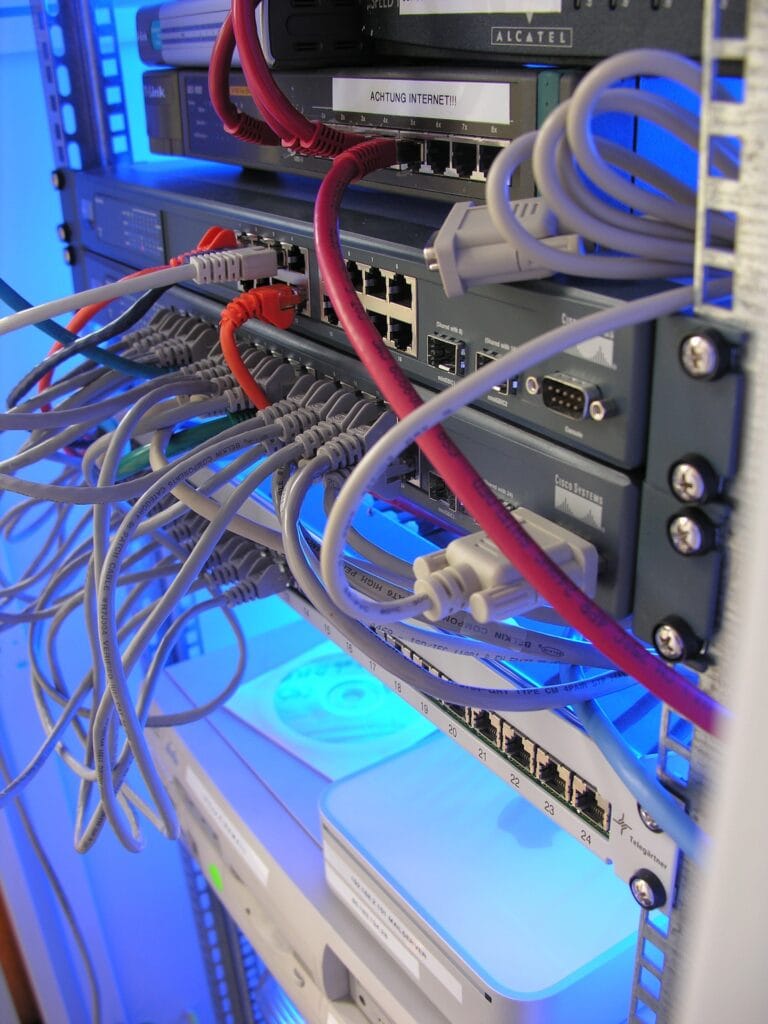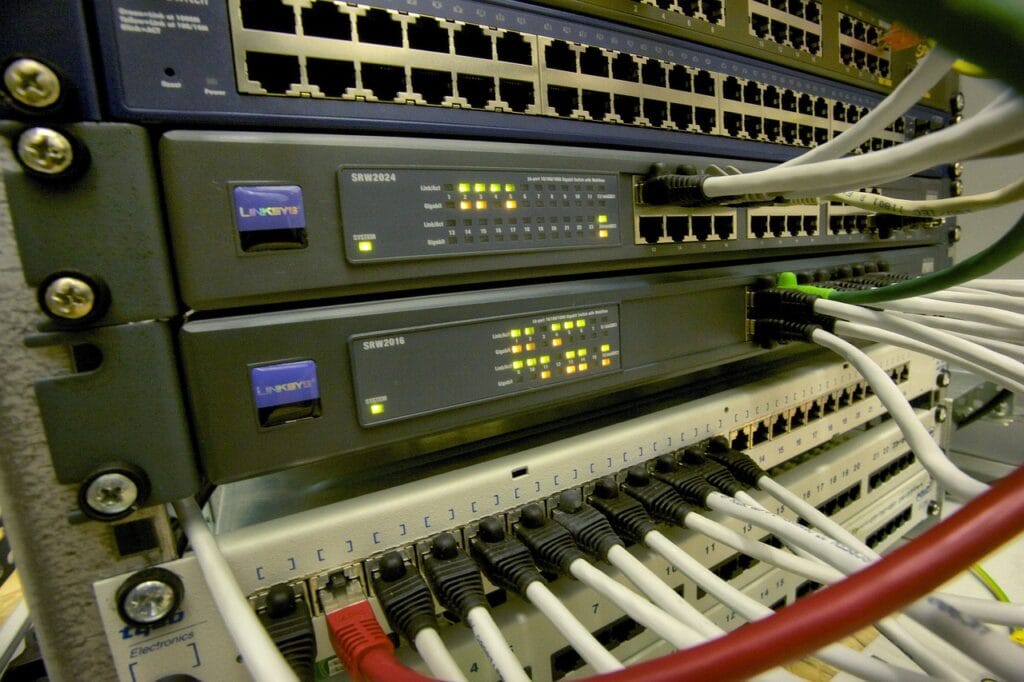Using a router as a network switch can be incredibly useful. It allows you to expand your network without buying new equipment.
Many people have spare routers lying around. Instead of letting them collect dust, you can repurpose them. Turning an old router into a network switch allows you to connect more devices to your network. This method is cost-effective and eco-friendly.
Even if you need to gain advanced technical skills, you can easily follow a few simple steps to repurpose your old router. This guide will walk you through the process in a way that’s easy for anyone to understand. Ready to give your old router a new life? Let’s dive in and see how it’s done.

Benefits Of Using A Router As A Switch
Using a router as a network switch can provide many benefits. It can save money, reduce space, and make setup easier. Let’s explore these benefits in more detail.
Cost Savings
Routers can be expensive, but many people already have one. Using an existing router as a switch can save money. You don’t need to buy a separate switch.
Many routers also have extra ports, which means you can connect more devices without spending more money. Reusing a router is a great way to maximize its value.
Space Efficiency
Space is often limited in homes and offices. Using a router as a switch saves space, as you don’t need to find room for another device.
One device can handle multiple tasks, reducing clutter and keeping your work area clean. Fewer devices mean fewer cables and less mess.
Simplified Setup
Setting up a router as a switch is a straightforward process that most people can handle on their own. This not only saves time but also empowers you to manage your network without the need for professional assistance.
Many routers have user-friendly interfaces. This makes it easy to change settings. No special skills are required.
Follow these steps to set up your router as a switch:
- Connect the router to your main router using an Ethernet cable.
- Turn off the DHCP server on the secondary router.
- Assign a static IP address to the secondary router.
- Connect your devices to the secondary router.
In summary, using a router as a switch offers many benefits. It saves money, space, and time. It’s a practical solution for many network setups.
Understanding Routers And Switches
Understanding the difference between routers and switches is key to managing your network. Both devices play crucial roles but have distinct functions. This section will explain the functions of each device and highlight their key differences.
Router Functions
Routers connect multiple networks together. They direct data packets between devices. They also manage traffic and ensure data reaches its destination. Routers assign IP addresses to devices. They also provide internet access by connecting to a modem. Some routers include built-in security features like firewalls.
Switch Functions
Switches connect multiple devices within the same network and allow them to communicate with each other. They use MAC addresses to forward data to the correct device, reducing network congestion. Switches can be either unmanaged or managed. Unmanaged switches are simple and plug-and-play, while managed switches offer more control and features.
Key Differences
| Feature | Router | Switch |
|---|---|---|
| Function | Connects different networks | Connects devices within the same network |
| Data Handling | Uses IP addresses | Uses MAC addresses |
| Internet Access | Provides internet access | Does not provide internet access |
| Security Features | Often includes firewalls | Basic switches have no security features |
- Routers connect networks; switches connect devices.
- Routers use IP addresses; switches use MAC addresses.
- Routers provide internet; switches do not.
- Routers have security features; basic switches do not.
Understanding these differences helps you choose the right device for your needs. Both routers and switches are essential for network management.
When To Use A Router As A Switch
Many devices need a network connection in a home. You might have a smart TV, gaming console, and multiple computers. Sometimes, your main router runs out of ports. Using an old router as a switch can solve this problem. Connect the old router to your main router. Now, you have extra ports for more devices. This setup is simple and cost-effective.
Preparing Your Router
Always back up your router’s current settings. This step is crucial, as it allows you to restore the original configuration if needed. Access your router’s admin panel. Look for the backup option, which is usually found under system or maintenance settings.
Configuring The Router
Using a router as a network switch can save you money and space. To do this, you need to configure the router correctly. Follow these steps to ensure your router works as a network switch.
Disable DHCP
First, you must turn off the router’s DHCP server. The DHCP server assigns IP addresses to devices in the network, and having two DHCP servers running can cause conflicts.
- Log in to the router’s web interface.
- Navigate to the Network Settings or LAN Setup section.
- Find the option to disable DHCP and turn it off.
- Save the changes.
Assign Static IP
Next, assign a static IP address to the router. This ensures the router has a fixed IP within your network.
- Go to the LAN Settings or Network Setup page.
- Enter a static IP address that is within your network’s range but outside the DHCP range.
- Save the settings.
For example, if your main router’s IP range is 192.168.1.2 to 192.168.1.100, you can set the static IP to 192.168.1.200.
Connect Devices
Finally, connect your devices to the router. Use the LAN ports instead of the WAN port.
- Connect the main router to one of the LAN ports on the second router using an Ethernet cable.
- Connect other devices to the remaining LAN ports.
Your router should now function as a network switch, allowing multiple devices to communicate within the same network.
| Step | Action |
|---|---|
| 1 | Disable DHCP |
| 2 | Assign Static IP |
| 3 | Connect Devices |
Testing The Network
After setting up your router as a network switch, testing the network is crucial. This ensures all connections are active and internet access is reliable. Follow these steps to confirm everything is working perfectly.
Verify Connections
First, check all cable connections between devices and the router. Ensure each connection is secure.
- Confirm Ethernet cables are connected to the correct ports.
- Check the indicator lights on the router and devices. They should be green or blinking.
- Inspect cables for any damage or wear.
Use a network cable tester if available. This tool helps identify faulty cables or connections.
Check Internet Access
Next, verify internet access on each device connected to the router.
- Open a web browser on each device.
- Visit a reliable website, like Google or BBC.
- If the website loads, the connection is successful.
Perform a speed test to measure the connection’s performance. This helps ensure you get the expected internet speed.
Troubleshoot Issues
If any problems arise, troubleshoot them using the following steps:
- Restart the router and devices.
- Check the router settings for any misconfigurations.
- Update the router firmware to the latest version.
If issues persist, consult the router’s manual or seek help from technical support.
Advanced Configuration Tips
QoS stands for Quality of Service. It prioritizes network traffic, ensuring essential data gets through first. To enable QoS, go to your router’s settings. Find the QoS section. Enable QoS and set rules. You can prioritize devices or applications. For example, give higher priority to video calls. Save the settings and restart your router.

Common Issues And Solutions
Using a router as a network switch can be a smart way to expand your network. However, this setup can also bring common issues. Knowing these problems and their solutions helps ensure smooth network operation.
IP Conflicts
IP conflicts occur when two devices on the same network have the same IP address. This can lead to connectivity problems.
- Solution: Ensure all devices have unique IP addresses. Use static IP addresses for better control.
- Solution: Check the router’s DHCP settings and adjust the IP address range.
- Solution: Restart devices to refresh their IP addresses.
Limited Connectivity
Sometimes, devices connected to a router used as a switch may face limited connectivity. This often results from improper configuration or physical obstructions.
| Issue | Solution |
|---|---|
| Improper Configuration | Double-check the router’s settings. Ensure it is in bridge mode. |
| Physical Obstructions | Place the router in a central location. Avoid walls and large metal objects. |
Performance Problems
Using a router as a switch might lead to performance problems. You may notice slower speeds and lag.
- Solution: Ensure the router’s firmware is up-to-date. Firmware updates fix bugs and improve performance.
- Solution: Limit the number of devices connected to the router. Too many devices can overwhelm the router.
- Solution: Use quality Ethernet cables. Avoid using old or damaged cables.
By addressing these common issues, you can effectively use a router as a network switch. Follow these solutions to maintain a stable and efficient network.
Future-proofing Your Network
In today’s digital age, future-proofing your network is essential. This approach ensures your network can adapt to new technologies and increased demands. Using a router as a network switch is a smart way to achieve this. It not only saves money but also offers flexibility.
Upgrade Path
Choosing a router with switch capabilities gives you an easy upgrade path. As technology evolves, you can replace the router without disrupting the entire network. This approach is cost-effective and minimizes downtime.
Consider investing in a router with gigabit ports. These ports support faster data transfer rates. They are ideal for future upgrades and high-speed internet connections. Planning for future upgrades helps keep your network efficient and reliable.
Adding More Devices
Modern households and offices have numerous devices. Phones, laptops, smart TVs, and IoT devices need reliable connectivity. Using your router as a network switch allows you to connect multiple devices without performance issues.
- Ensure the router has enough ports.
- Look for models with at least four Ethernet ports.
- Consider routers that support both wired and wireless connections.
This setup ensures all devices get stable and fast internet access. It also helps manage network traffic efficiently.
Scalability Considerations
Scalability is crucial for growing networks. A router used as a switch offers flexibility. It allows you to expand your network without replacing the core hardware.
| Feature | Benefit |
|---|---|
| Multiple LAN Ports | Connect more devices |
| VLAN Support | Segment network for security |
| QoS | Prioritize critical traffic |
Using VLANs (Virtual Local Area Networks) enhances security and performance. Quality of Service (QoS) features help prioritize important traffic. This setup is ideal for homes and small offices with growing needs.
Future-proofing your network with a router as a switch ensures stability and scalability. It prepares your network for upcoming technological advancements.
Credit: www.cloudflare.com
Frequently Asked Questions
Can I Use A Router As A Network Switch?
Yes, you can use a router as a network switch. Simply disable its DHCP server and connect devices to its LAN ports.
Why Use A Router As A Switch?
Using a router as a switch can save money and space. It repurposes existing equipment for expanded network connectivity.
How To Convert Router To Switch?
To convert a router to a switch, disable its DHCP server and use only LAN ports for connections.
Does Using A Router As A Switch Affect Performance?
Using a router as a switch typically doesn’t affect performance. It functions similarly to a standard network switch.
Conclusion
Using a router as a network switch can be a smart move. It saves money and space. The setup is simple and doesn’t require special skills. Your old router can still be useful. This method can also improve your network performance.
Just follow the steps carefully. Enjoy a more efficient network without extra costs. Give your devices the connection they need. It’s a practical solution for many homes and offices.










